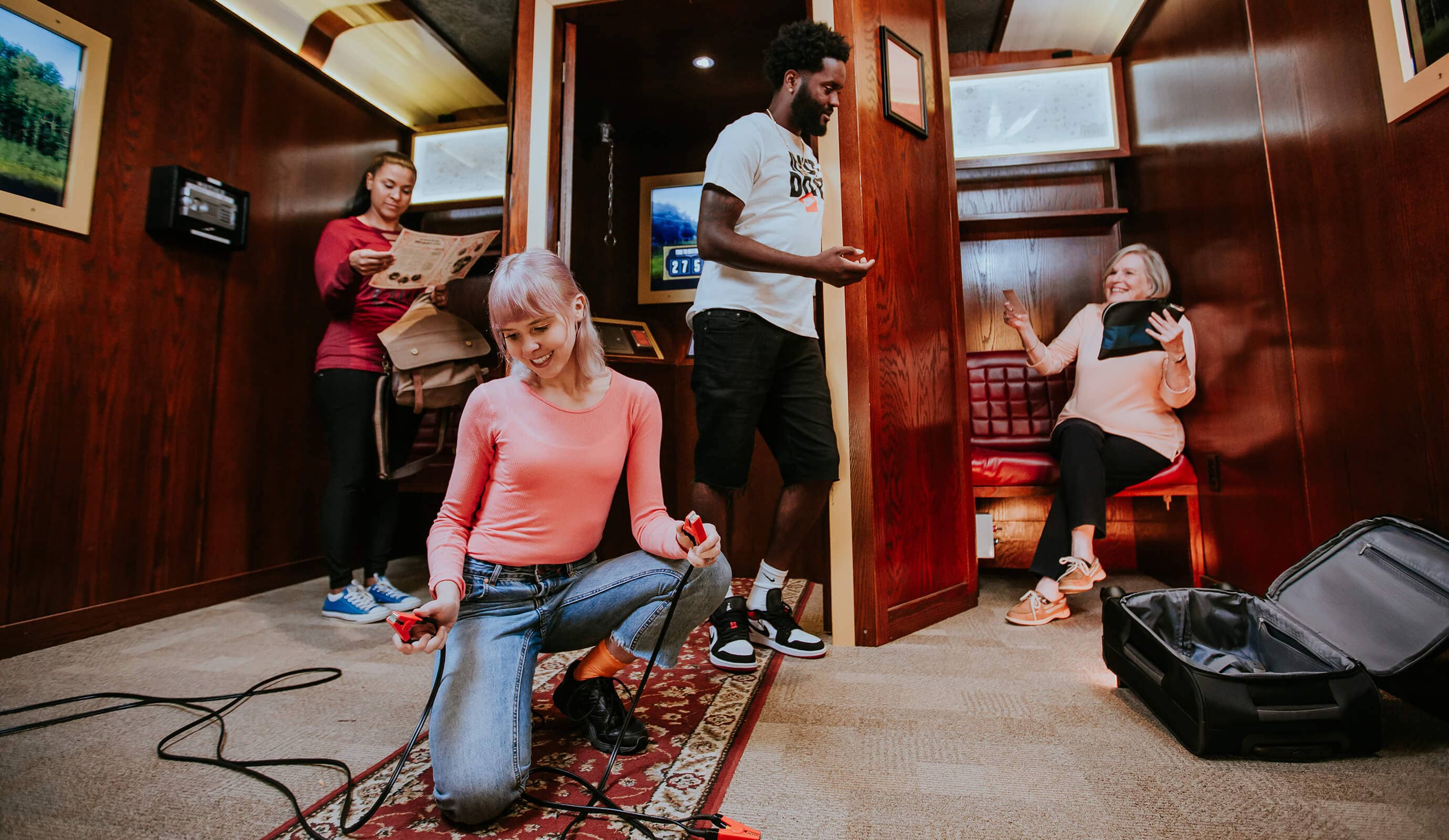Study a World of Experience and Problem-Solving in Escape Rooms
Retreat rooms have actually surged in appeal, offering a special blend of adventure and cognitive obstacle that astounds individuals of all ages. From unraveling elaborate historical mysteries to browsing eerie, spine-chilling circumstances, each area offers a distinctive story that tests your problem-solving acumen. Whether you're an interested newbie or a skilled fanatic, the attraction of these immersive challenges bids.
The Surge of Escape Rooms
Escape rooms have actually seen a considerable rise in appeal over the past decade, changing from niche enjoyment to a mainstream sensation. Coming from Japan around 2007, these interactive puzzle video games quickly mesmerized target markets worldwide. The immersive experience of being "secured" in an area and working collaboratively to address puzzles within a set duration supplies a distinct blend of excitement and cognitive difficulty.
The rise of getaway areas can be credited to numerous variables. Firstly, they deal with a broad demographic, from family members seeking an enjoyable outing to company teams curious about team-building exercises. The interactive nature of getaway areas uses a substantial contrast to the online escapism common in digital gaming. Participants are literally existing, involving in real-world analytical, which adds an element of credibility and enjoyment.
Retreat rooms foster collaboration and interaction, encouraging individuals to pool their skills and knowledge (escape room). The constant evolution of problem design and technological assimilation makes sure that retreat areas stay fresh and challenging, contributing to their sustained appeal.
Sorts Of Escape Room Motifs

One prevalent style is the "Mystery and Detective" style, where individuals presume the function of detectives entrusted with resolving a criminal activity or uncovering a covert reality. These rooms typically feature intricate problems and narrative-driven obstacles that require keen monitoring and sensible thinking.
An additional prominent motif is "Historic and Adventure". Here, gamers may locate themselves in old Egypt, browsing with a pharaoh's burial place, or throughout Globe Battle II, translating enemy messages. These styles supply an instructional twist, blending historic facts with interesting gameplay.
For those looking for a thrill, "Horror and Paranormal" getaway spaces provide spine-chilling experiences. Embed in haunted homes or deserted asylums, these spaces depend on emotional scares and climatic effects to increase the stress.
Trick Abilities for Success
Success in retreat areas hinges on a mix of vital abilities that participants must harness to get rid of the diverse challenges they will encounter. Similarly crucial is synergy; getaway rooms call for a collaborative initiative, where each participant's staminas are made use of to deal with different puzzles and tasks successfully.
Analytical thinking is additionally vital, permitting teams to study complex puzzles and establish rational links in between inconsonant components within the area. Time administration is a more vital, as the fixed duration of retreat room experiences requires reliable allotment of time to various jobs and puzzles.
The capability to pivot methods when initial strategies falter ensures that teams can dynamically react to developing difficulties. Proficiency of these skills jointly enhances the possibility of an effective escape.
The Psychology of Problem-Solving
Understanding the psychology of problem-solving is vital for browsing the elaborate challenges offered by escape spaces. Problem-solving is a cognitive procedure that includes recognizing an issue, producing possible services, evaluating them, and after that implementing the very best strategy. Cognitive psychologists have long examined this procedure, recognizing different stages such as issue identification, structuring the problem, and using heuristics or algorithms to locate options.
Escape rooms produce a setting where individuals must quickly move with these cognitive phases under pressure. The high-stakes, time-constrained nature of retreat areas can generate a state of increased web link stimulation, which can either improve or impair cognitive efficiency depending upon the person's stress and anxiety reaction. The Yerkes-Dodson Regulation recommends that moderate stress levels can optimize problem-solving abilities, whereas excessive stress can be damaging.
Additionally, escape areas often require joint analytic, leveraging group dynamics to enhance cognitive processes. Recognizing these psychological concepts can dramatically boost one's ability to fix complicated challenges effectively.
Tips for First-Timers
Starting your initial escape space experience can be both overwhelming and thrilling. To boost your experience, it is important to approach it with a technique. Most importantly, construct a group with diverse abilities. A mix of logical thinkers, innovative minds, and great communicators is ideal. The more varied the capability, the much better outfitted you'll be to tackle different kinds of puzzles.
Interaction within the team is extremely important. Share searchings for and understandings immediately, as one person's discovery might be the missing piece one more needs. Stay clear of passage vision; if a puzzle seems impossible, pass it on to a colleague to acquire a fresh point of view.
Time monitoring is also crucial. website link Watch on the clock and designate your time sensibly. If a specific puzzle is taking in way too much time, it could be sensible to carry on and return to it later.

Final Thought
Retreat areas use a distinct blend of journey, cognitive difficulty, and immersive storytelling, making them a preferred choice for both amusement and skill advancement. By involving in varied motifs and intricate problems, individuals improve team effort, interaction, and analytic capacities. The emotional benefits gotten from these experiences extend past the getaway area, fostering enhanced interpersonal skills and cognitive features. Accept the world of escape areas to grow important thinking and develop enduring, collective memories.
The continuous development of puzzle design and technical assimilation ensures that getaway rooms remain difficult and fresh, adding to their continual appeal. - escape room
Equally crucial is teamwork; getaway spaces call for a joint initiative, where each participant's strengths are made use of to take on various challenges and jobs efficiently.
Time monitoring is a further essential, as the fixed duration of retreat space experiences requires efficient allotment of time to different tasks and challenges.
Comprehending the psychology of problem-solving is crucial for navigating the detailed challenges provided by retreat rooms.In addition, retreat areas often need joint problem-solving, leveraging group characteristics to enhance cognitive processes.